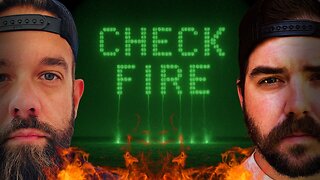Premium Only Content

Unraveling the Mystery: Thai Airways 311 Crash Investigation | Aviation Disasters Explored in Depth!
Embark on a gripping journey into the tragic tale of Thai Airways 311 as we unravel the events leading to its devastating crash in Kathmandu, Nepal. With 99 passengers and 14 crew members on board, the flight took off from Bangkok on a scheduled journey to Kathmandu.
Navigating the challenging terrain surrounding Kathmandu airport, the crew faced steep approaches and relied on radio communications due to the absence of radar. As the aircraft initiated the Sierra approach to runway 02, a sudden change in weather forced the crew to adapt. Runway 02 became unavailable, leading to a shift to runway 20, requiring a circling approach that the captain was reluctant to undertake.
In the midst of these challenges, a flap fault further complicated the situation, prompting consideration of a diversion to Calcutta. As the flap fault was resolved, the crew decided to proceed to Kathmandu, but now faced the challenge of being too high for a straight-in approach.
Attempting to restart the approach, the crew encountered difficulties with the Flight Management System, leading to a critical communication breakdown with ATC. With traffic to the left and mountains to the north, the captain initiated a right turn, inadvertently deviating from the correct path.
The aircraft continued on a northerly heading, completing a 360-degree turn, and tragically collided with a mountain peak at the 11,500-foot level. The impact resulted in the destruction of the aircraft, claiming the lives of all 113 occupants.
The investigation, conducted by the Civil Aviation Authority of Nepal, Airbus, and TSB Canada, identified the flight crew's mismanagement of the aircraft's flight path, compounded by ineffective radio communication and cockpit coordination, as the primary causes. Contributing factors included misleading approach charts, a resolved flap fault requiring a discontinued approach, and communication difficulties between the crew and air traffic controllers.
-
 13:09:56
13:09:56
LFA TV
1 day agoBREAKING: CHARLIE KIRK ASSASSINATED - WEDNESDAY 9/10/25
394K131 -
 1:31:08
1:31:08
I_Came_With_Fire_Podcast
11 hours agoCheck Fire: God Bless Charlie Kirk
108K31 -
 1:13:35
1:13:35
Glenn Greenwald
13 hours agoCharlie Kirk Assassinated; NATO Alleges Russian Drones Flew Over Poland, and More | SYSTEM UPDATE #512
305K321 -
 1:46:28
1:46:28
Badlands Media
1 day agoAltered State S3 Ep. 45: The Assassination of Charlie Kirk
178K31 -
 8:56:53
8:56:53
Dr Disrespect
19 hours ago🔴LIVE - DR DISRESPECT - THE FINALS - NEW SEASON 8 LAUNCH EVENT W/ THE SHOTTY BOYS
291K11 -
 27:00
27:00
BonginoReport
14 hours agoRest In Peace Charlie Kirk - Nightly Scroll w/ Hayley Caronia (Ep.131) - 09/10/2025
273K421 -
 1:20:06
1:20:06
Kim Iversen
14 hours agoRIP Charlie Kirk: When Words Fail, They Reach for Guns
193K360 -
 2:47:04
2:47:04
DDayCobra
15 hours ago $18.68 earnedCharlie Kirk SHOT
162K66 -
 1:14:30
1:14:30
Redacted News
14 hours agoBREAKING! CHARLIE KIRK SHOT BY ASSASSIN IN UTAH, TRUMP CALLS FOR NATIONAL PRAYERS
342K544 -
 3:50:27
3:50:27
Right Side Broadcasting Network
20 hours agoLIVE REPLAY: Latest News from the Trump White House - 9/10/25
382K102